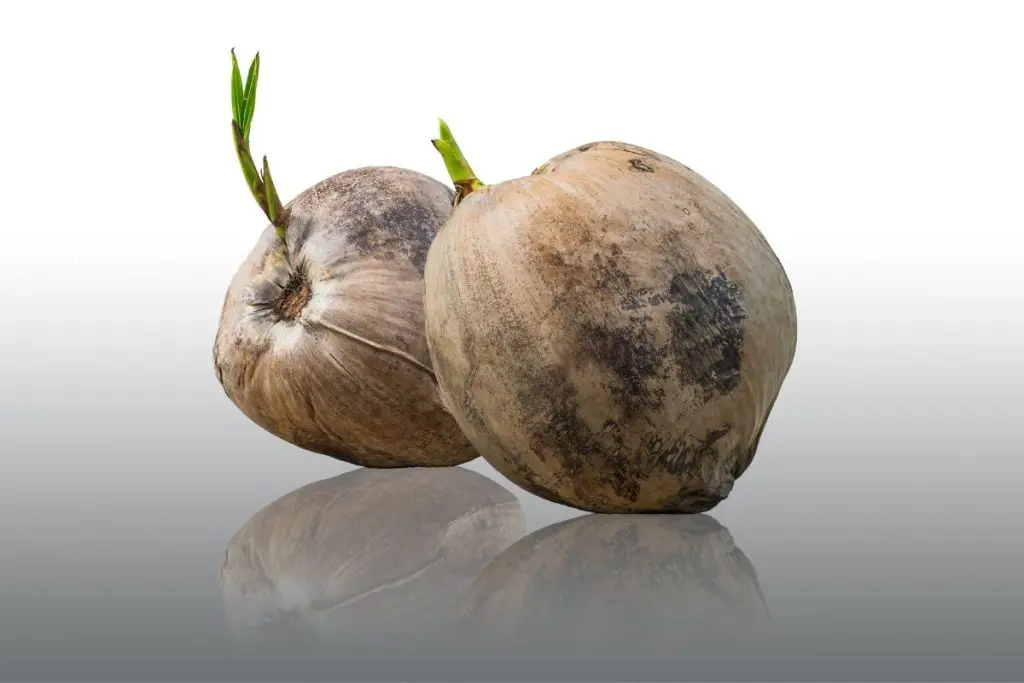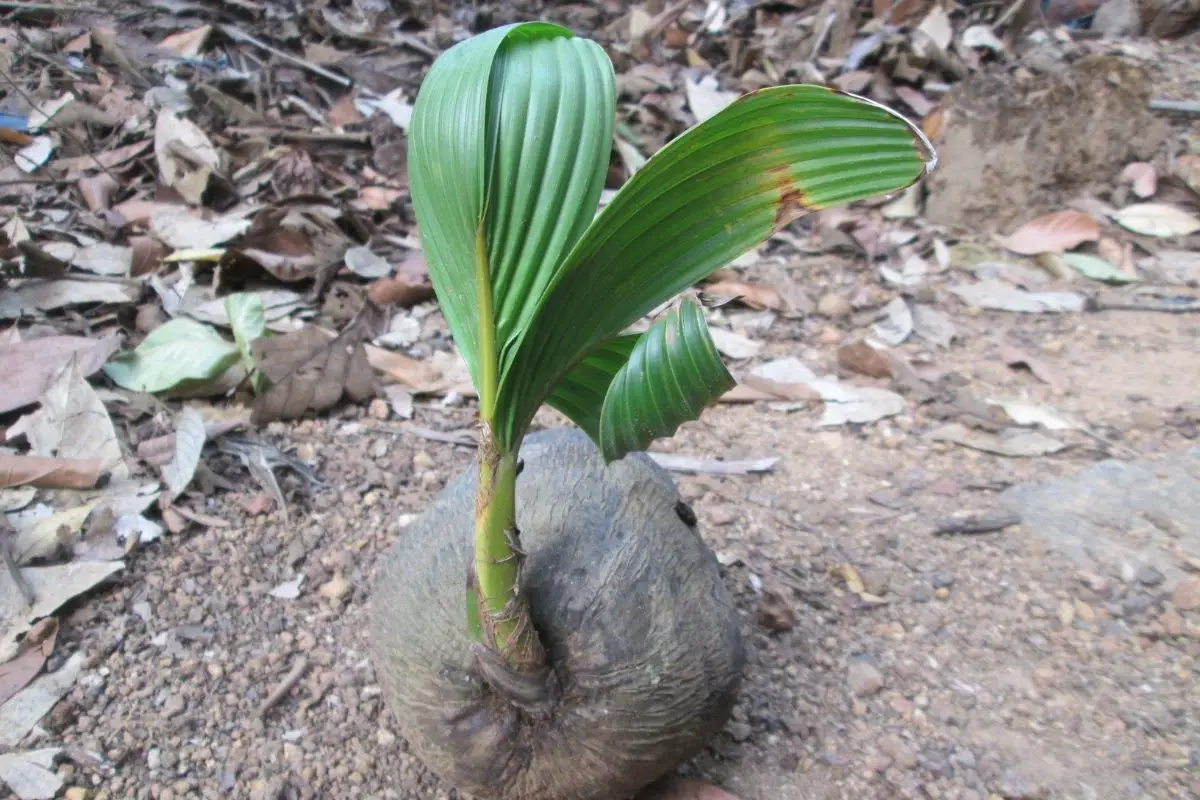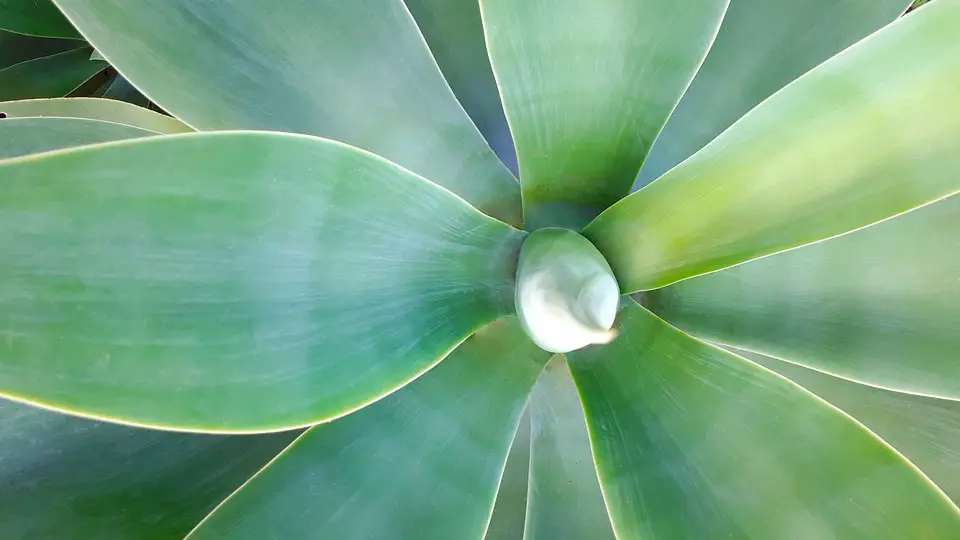Gardeners are always looking for new plants to add to their repertoire, and coconuts can be a great addition.
While most people think of growing coconuts as something that has to be done in a tropical climate, it is possible to grow them in cooler climates too.
It is possible to grow coconuts from store bought coconuts and it’s not that difficult to do either. With some time, the right conditions and some patience you can have a coconut tree growing at home in no time at all.

How do you grow a coconut from a store bought coconut?
Start out by selecting a coconut that feels healthy and has not started to go bad. If it smells like bleach, the coconut is past its prime.
Once you have found one that’s good, you need to soak the coconut in water for two to three days, giving it a good soak.
Place the soaked coconut into a container that has really good quality, well drained soil – a mixture of good potting soil, coarse sand and fine gravel will ensure that the mixture drains well while holding good levels of moisture.
Make sure that the container is at least a foot deep which will provide ample room for the roots to grow and leave about a third of the coconut above the soil level.
It’s important to keep the coconut in a warm place that has good levels of natural light.
The key to getting the coconut to germinate is to make sure that it is well watered but not so much that the soil gets waterlogged.
Always make sure that the soil is draining well.
[amazon box=”B08GHR556X” template=”horizontal”]
How do you get the coconut to sprout?
It takes time and patience and you need to make sure that you provide the best growing conditions for the coconut to germinate – water, warmth and well draining soil are all key.
The coconut make take several months to show signs of germination and you will need to be patient while this takes place.
How do you plant a coconut?
When the roots start to grow and the stem begins to show, it’s time to move the plant into a larger container that is filled with good soil.
Water the soil well but don’t let it get waterlogged and place in a sunny or partly sunny window where it will get lots of natural light.
It’s perfectly possible to grow a small coconut tree in containers and it is equally good for growing them outside.
Growing coconut trees requires patience, you can grow them inside or out as long as you provide the right conditions and they will germinate and thrive with minimal effort on your part.
Coconut palms can get very large and they can live for a very long time.
Can you grow a coconut tree in your house?
Of course, growing coconut trees indoors is easy as they don’t require a lot of maintenance.
They are easy to grow, don’t take up much space and they look great so it’s always good to have one.
Coconuts are not very difficult to grow at all – most people think that they only grow in tropical climates but this simply isn’t true.
You can easily grow coconut palms outdoors or indoors if conditions are conducive, with some time and effort on your part they will germinate and flourish.
[amazon box=”B07DBBDPJW” template=”horizontal”]
How long does it take for coconut fruit to grow?
The length of time that it takes for coconuts to grow varies depending on the variety and the conditions.
Typically, growing coconut trees indoors in containers takes less time than these varieties that are grown outside.
If you plant a coconut tree that has been germinated from a fresh nut, it can take up to ten years before you have fruit.
On average, coconuts take six to ten years to start producing fruits.
What is a good fertilizer for a growing coconut tree?
There is no secret formula for feeding growing coconut trees as they don’t require too much attention or care once they have been planted.
A general purpose fertilizer will do just fine and you should use one with an NPK value of about 12-4-8.
In addition, it’s also a good idea to spill some mulch around the coconut trees which helps them retain water and keeps the soil moist.
When does a coconut tree produce the most fruit?
With the proper conditions and the right care most coconut trees reach maximum production when they are aged anywhere between 20 to 30 years.
Final Words
Even though growing coconut trees doesn’t require too much effort on your part, it isn’t something that you can do overnight.
They take time to grow and develop so if you are considering planting large coconut palms around your home or garden, give them time to establish themselves.
After this time has elapsed, they will start to provide shade and produce coconuts which is really quite rewarding for very little input on your part.




